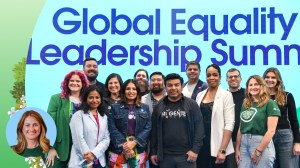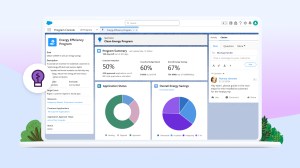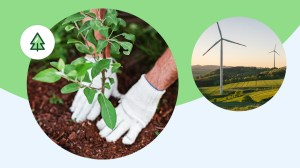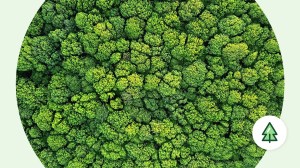Salesforce Announces First International Renewable Energy Agreement to Date, Milestone on Path to Achieving 100 Percent Renewable Energy



Pip Marlow
Australians are increasingly being affected by climate change and the extreme weather events it creates. We’ve just gone through our worst bushfire season ever in New South Wales. The Great Barrier Reef has lost half its coral since 1995. We are entering a La Niña weather pattern again, with memories of the 2011 Queensland cyclone season and floods fresh in the minds of many.
Just as COVID-19 has exposed the fragility in our systems and the inequalities facing the world today, so too has the climate crisis.
Climate change is one of the biggest and most complex challenges that we’ve ever faced. It impacts everyone – every individual, company and nation – and we are learning that those with the least are often impacted the most. It’s why I believe that combating climate change is everyone’s job, because it’s everyone’s planet.
And, just like the multi-faceted crisis we are in, our solutions must be multi-faceted. That’s why I’m proud we have announced the company’s first international renewable energy agreement, with X-ELIO’s Blue Grass solar farm, located in the Western Downs region of Queensland. Salesforce has contracted with 25% of the 200MW project which in total is expected to generate enough energy to power the equivalent of 80,000 Queensland homes, and save more than 320,000 tonnes of CO2 emissions each year.
As a cloud pioneer and sustainability leader, Salesforce is responsible for the transition to clean and renewable sources of electricity this decade. We want a future in which clean and renewable energy is powering the world around the clock. To that end, we have committed to reaching 100% renewable energy by 2022. The Blue Grass solar farm is a key milestone on that journey and will match our electricity use for our operations in Australia.
Why the Blue Grass solar farm in Queensland?
On our renewable energy journey we quickly learned that not all renewable energy is created equal. Two projects with identical transactional details can have enormously different impacts. Some renewable energy projects displace more fossil fuels than others, some are built at the cost of critical habitat for plants and animals, and others provide invaluable support for their local community.
To better evaluate project impacts, we created a renewable energy procurement matrix — a tool for scoring projects across different economic, environmental, and social criteria. Each of which is weighted according to Salesforce’s own prioritization to reflect the tradeoffs being made between them.
The Blue Grass solar farm is an excellent example of how the matrix can help identify projects that better improve the state of the world. While there will inevitably be tradeoffs with this criteria, this project checks a number of boxes, including:
- High avoided emissions: Blue Grass has the highest avoided emissions rate of any project in Salesforce’s portfolio, over two times that of a comparable project in California.
- Land-use: Blue Grass is sited on land with low ecological value, avoiding sensitive vegetation and wildlife habitats.
- Community Engagement: In addition to creating 400 construction jobs, X-ELIO is dedicating a percentage of the annual gross income of the project to a Community Support and Benefit Sharing Program, which will support local community projects in areas such as education and community renewable projects.
Salesforce’s Renewable Energy Journey
We made the company’s first public commitment to reach 100% renewable energy in 2013. For Salesforce, that means purchasing renewable energy and certificates equivalent to the amount of power we use in our global operations every year. Achieving this in an impactful way means thinking about deliberate, lasting, long-term grid transformation. That’s why Salesforce tries to focus on purchasing renewable energy in ways that add new renewable energy to the grid, avoids and reduces the greatest possible emissions, and blazes a trail for others to follow.
I’m proud that sunny Queensland, in our own backyard, was able to provide the location, local workforce and potential for renewable energy generation to become an important step in our journey. Local action playing a big part in our global plan.
For us, purchasing renewable energy is about much more than adding new megawatts of renewable energy to the grid. It’s about improving the state of the world, which includes reducing emissions, and so much more.
Our goal is to ensure the energy transition meets its true potential for improving the state of the world. And, we know that together, we can have a larger influence shaping the industry. That’s why we are sharing some of what we’ve learned from the experts and our general approach with the entire renewable energy community. Our hope is that others can use and improve upon this work.















